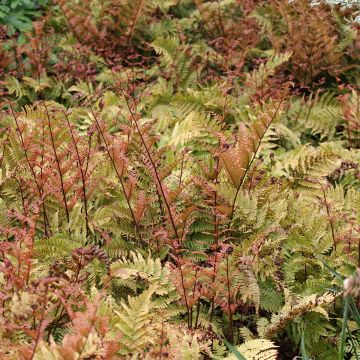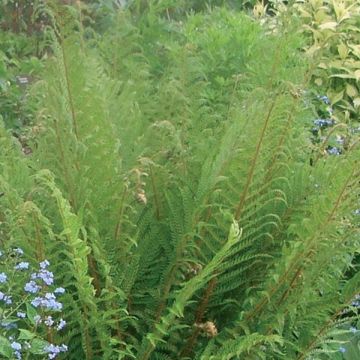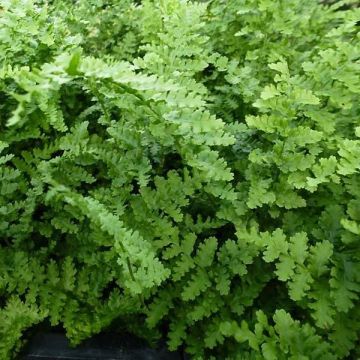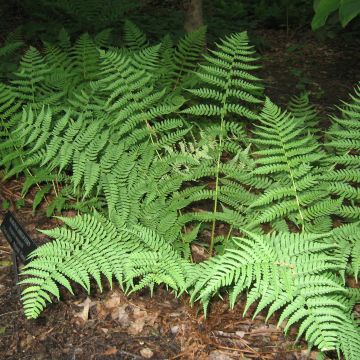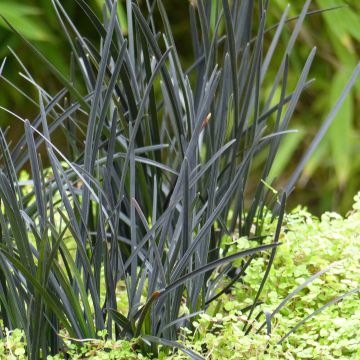

Dryopteris ludoviciana - Fougère


Dryopteris ludoviciana - Fougère
Dryopteris ludoviciana - Florida Shield Fern
Dryopteris ludoviciana
Southern Wood Fern, Florida Shield Fern
This item cannot be shipped to the selected country
Delivery charge from €5.90
More information
Schedule delivery date,
and select date in basket
This plant carries a 12 months recovery warranty
More information
We guarantee the quality of our plants for a full growing cycle, and will replace at our expense any plant that fails to recover under normal climatic and planting conditions.
From €5.90 for pickup delivery and €6.90 for home delivery
Express home delivery from €8.90.
Does this plant fit my garden?
Set up your Plantfit profile →
Description
Dryopteris ludoviciana is a fern native to the marshy areas of Louisiana and Florida where it is commonly known as "The southern woodfern". Although not frequently planted in our gardens, it possesses many qualities: it is vigorous, very cold-resistant, tolerant to limestone, dense shade, and waterlogged soils. This botanical species forms a beautiful clump of shiny and tough fronds of two types, upright or spreading, which persist more or less in winter depending on the climate. It is a great choice to dress shaded areas of the garden, especially on the banks of water points or in very humid soils.
Dryopteris ludoviciana belongs to the large family of Dryopteridaceae. It is a botanical species native to the southern United States, where it is found in a vast area ranging from Florida to Texas, Kentucky, and North Carolina, in marshy forests, often on a limestone substrate. Its foliage persists in winter in mild climates. This fern slowly forms a beautiful clump with a habit that is both upright and spreading, reaching an average height of 90cm (35in) and a spread of 80cm (32in). The clump expands over time thanks to short rhizomes, without colonizing space. It is composed of two types of fronds: the sterile fronds stand upright, dominating the arched fertile fronds that will bear spores. Each frond, with a long triangular shape, a tough and shiny texture, is divided twice into more or less crenate leaflets. Their colour gradually transitions from a very bright light green to dark green. D. ludoviciana is hardy beyond -15°C.
Dryopteris ludoviciana, not demanding regarding soil type, is very easy to grow in all shaded and cool to moist locations, including clay soils with a limestone tendency. Elegant yet sturdy, it is perfect for slightly neglected areas of the garden, where it will thrive under tree cover. It can also be planted near a water point, alongside other perennials for wet banks such as Rodgersia, Solomon's Seals, and Astilbes. It forms very attractive mass plantings in the understorey, placed next to Astilbe arendsii 'Burgundy Red', a feathery-leaved fern like Athyrium filix-femina, or Ligularias.
Report an error about the product description
Dryopteris ludoviciana - Florida Shield Fern in pictures
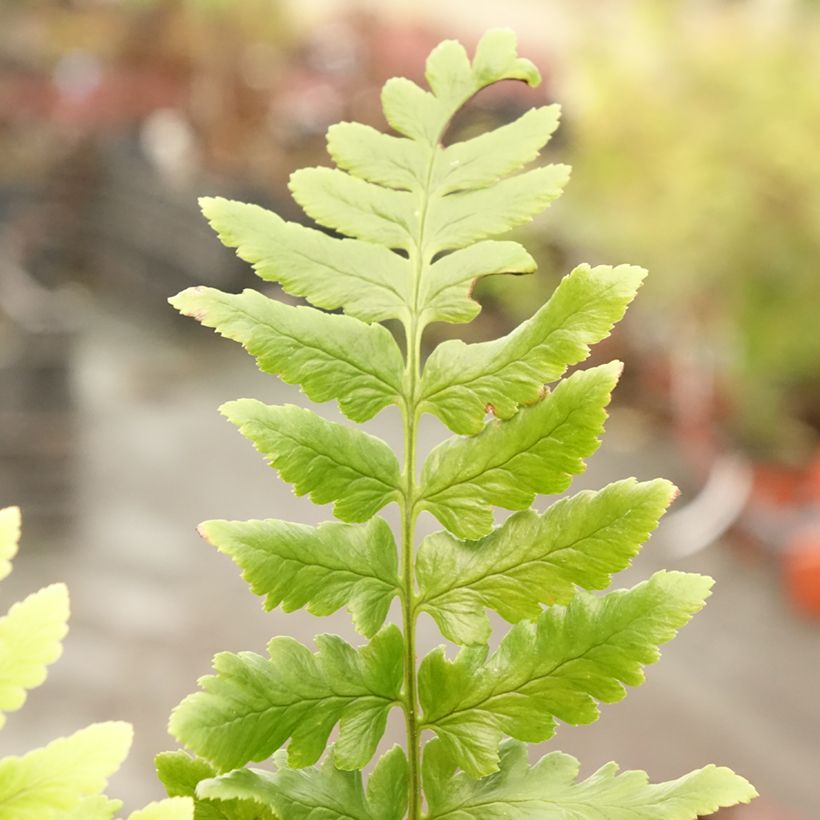

Foliage
Plant habit
Botanical data
Dryopteris
ludoviciana
Dryopteridaceae
Southern Wood Fern, Florida Shield Fern
North America
Other Dryopteris
Planting and care
Among the ferns of temperate zones around the world, the ludoviciana fern is one of the easiest to cultivate in any moist to wet soil, even marshy, peaty, clayey or limestone. It can be planted in spring or autumn, in shade or partial shade, in a fertile soil enriched with compost, not drying out in summer.
Planting period
Intended location
Care
This item has not been reviewed yet - be the first to leave a review about it.
Shade-loving perennials
Haven't found what you were looking for?
Hardiness is the lowest winter temperature a plant can endure without suffering serious damage or even dying. However, hardiness is affected by location (a sheltered area, such as a patio), protection (winter cover) and soil type (hardiness is improved by well-drained soil).

Photo Sharing Terms & Conditions
In order to encourage gardeners to interact and share their experiences, Promesse de fleurs offers various media enabling content to be uploaded onto its Site - in particular via the ‘Photo sharing’ module.
The User agrees to refrain from:
- Posting any content that is illegal, prejudicial, insulting, racist, inciteful to hatred, revisionist, contrary to public decency, that infringes on privacy or on the privacy rights of third parties, in particular the publicity rights of persons and goods, intellectual property rights, or the right to privacy.
- Submitting content on behalf of a third party;
- Impersonate the identity of a third party and/or publish any personal information about a third party;
In general, the User undertakes to refrain from any unethical behaviour.
All Content (in particular text, comments, files, images, photos, videos, creative works, etc.), which may be subject to property or intellectual property rights, image or other private rights, shall remain the property of the User, subject to the limited rights granted by the terms of the licence granted by Promesse de fleurs as stated below. Users are at liberty to publish or not to publish such Content on the Site, notably via the ‘Photo Sharing’ facility, and accept that this Content shall be made public and freely accessible, notably on the Internet.
Users further acknowledge, undertake to have ,and guarantee that they hold all necessary rights and permissions to publish such material on the Site, in particular with regard to the legislation in force pertaining to any privacy, property, intellectual property, image, or contractual rights, or rights of any other nature. By publishing such Content on the Site, Users acknowledge accepting full liability as publishers of the Content within the meaning of the law, and grant Promesse de fleurs, free of charge, an inclusive, worldwide licence for the said Content for the entire duration of its publication, including all reproduction, representation, up/downloading, displaying, performing, transmission, and storage rights.
Users also grant permission for their name to be linked to the Content and accept that this link may not always be made available.
By engaging in posting material, Users consent to their Content becoming automatically accessible on the Internet, in particular on other sites and/or blogs and/or web pages of the Promesse de fleurs site, including in particular social pages and the Promesse de fleurs catalogue.
Users may secure the removal of entrusted content free of charge by issuing a simple request via our contact form.
The flowering period indicated on our website applies to countries and regions located in USDA zone 8 (France, the United Kingdom, Ireland, the Netherlands, etc.)
It will vary according to where you live:
- In zones 9 to 10 (Italy, Spain, Greece, etc.), flowering will occur about 2 to 4 weeks earlier.
- In zones 6 to 7 (Germany, Poland, Slovenia, and lower mountainous regions), flowering will be delayed by 2 to 3 weeks.
- In zone 5 (Central Europe, Scandinavia), blooming will be delayed by 3 to 5 weeks.
In temperate climates, pruning of spring-flowering shrubs (forsythia, spireas, etc.) should be done just after flowering.
Pruning of summer-flowering shrubs (Indian Lilac, Perovskia, etc.) can be done in winter or spring.
In cold regions as well as with frost-sensitive plants, avoid pruning too early when severe frosts may still occur.
The planting period indicated on our website applies to countries and regions located in USDA zone 8 (France, United Kingdom, Ireland, Netherlands).
It will vary according to where you live:
- In Mediterranean zones (Marseille, Madrid, Milan, etc.), autumn and winter are the best planting periods.
- In continental zones (Strasbourg, Munich, Vienna, etc.), delay planting by 2 to 3 weeks in spring and bring it forward by 2 to 4 weeks in autumn.
- In mountainous regions (the Alps, Pyrenees, Carpathians, etc.), it is best to plant in late spring (May-June) or late summer (August-September).
The harvesting period indicated on our website applies to countries and regions in USDA zone 8 (France, England, Ireland, the Netherlands).
In colder areas (Scandinavia, Poland, Austria...) fruit and vegetable harvests are likely to be delayed by 3-4 weeks.
In warmer areas (Italy, Spain, Greece, etc.), harvesting will probably take place earlier, depending on weather conditions.
The sowing periods indicated on our website apply to countries and regions within USDA Zone 8 (France, UK, Ireland, Netherlands).
In colder areas (Scandinavia, Poland, Austria...), delay any outdoor sowing by 3-4 weeks, or sow under glass.
In warmer climes (Italy, Spain, Greece, etc.), bring outdoor sowing forward by a few weeks.

































